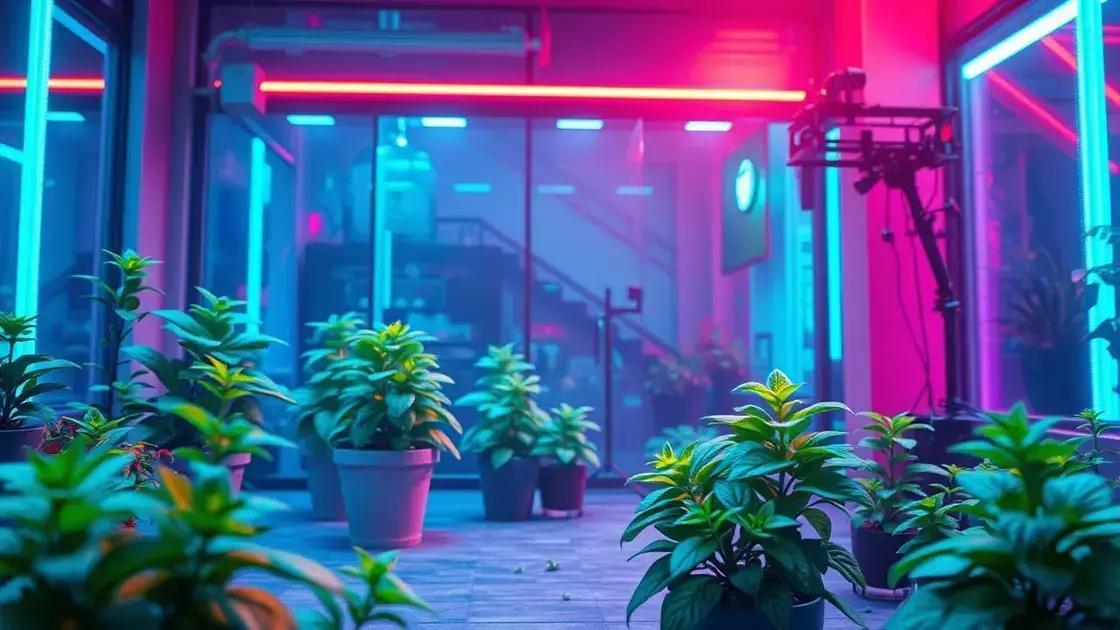How to Take Care of a Mint Plant Indoors: 5 Essential Tips for Success
How to take care of a mint plant indoors is a question many indoor gardeners ask. Growing mint can be incredibly rewarding, offering fresh flavor for your dishes while brightening your home. Dive into our guide to uncover vital tips and insights!
Table of Contents
ToggleChoosing the right pot and soil for your mint plant
Choosing the right pot and soil for your mint plant is crucial for its growth and health. Proper pot selection ensures adequate drainage and room for roots to expand, while the right soil mix provides the necessary nutrients for your indoor gardening success.
Essential factors to consider when selecting a pot
- Size: Choose a pot that is at least 6-8 inches in diameter to allow for growth.
- Material: Terracotta or clay pots are ideal, as they offer good breathability. Plastic pots are lighter and retain moisture well.
- Drainage: Ensure the pot has drainage holes to prevent water logging and root rot.
Best soil options for growing mint indoors
Using the right soil is vital for indoor mint health. Here are some options:
- Potting mix: A quality potting mix with good drainage works well.
- Coconut coir: This organic material retains moisture while improving drainage.
- Compost: Incorporating compost offers additional nutrients.
Creating a DIY soil mix
If you prefer to mix your soil, you can create an effective blend. Here’s how:
- Add 2 parts potting soil
- Add 1 part perlite for drainage
- Add 1 part compost for nutrients
Potting and transplanting your mint
Once you have chosen the right pot and soil, follow these steps to pot your mint:
- Fill the pot with soil, leaving about an inch of space at the top.
- Plant the mint carefully, ensuring the roots are spread out.
- Water lightly to settle the soil around the roots.
By properly choosing the pot and soil for your mint plant, you’ll ensure a flourishing herb that enhances your indoor garden. For more insights, exploring indoor gardening techniques can offer additional valuable tips.
Understanding light requirements for mint plants indoors

Understanding light requirements for mint plants indoors is essential for their growth and vitality. Mint thrives in bright, indirect sunlight but can adapt to lower light conditions with adequate care.
Optimal light conditions for mint plants
To foster healthy growth, consider the following light factors:
- Bright, indirect light: Aim for 6-8 hours of bright, indirect sunlight daily.
- Direct sunlight: While mint can tolerate some direct sunlight, too much can cause leaf scorch.
- Artificial lighting: Use grow lights if natural light is insufficient, especially in winter months.
Adjusting to different light scenarios
Mint can adapt to various lighting scenarios. Here’s how:
- For less light: Position the mint near a window with filtered sunlight.
- For more light: Rotate the plant to ensure even lighting on all sides.
- Monitor growth: If the leaves turn pale or leggy, it may be a sign of insufficient light.
Common questions about mint light needs
- What happens if mint does not get enough light?
Mint may become leggy and lose its vigor if deprived of proper light. - Can I grow mint under fluorescent lights?
Yes, fluorescent lights can effectively support mint growth if kept at an appropriate distance.
By mastering the light requirements for your mint plants, you will ensure they flourish beautifully in your indoor garden. For more insights, exploring indoor gardening techniques is a fantastic resource.
Watering and fertilizing your indoor mint plant effectively
Watering and fertilizing your indoor mint plant effectively is key to keeping it healthy and thriving. Proper care ensures that your mint grows robustly and remains flavorful.
Watering essentials for mint plants
Mint plants thrive with consistent moisture, but overwatering can lead to root rot. Here are some critical watering tips:
- Check the soil: Always check the top inch of soil; if it’s dry, it’s time to water.
- Watering frequency: Water every 1-2 weeks, adjusting based on humidity and temperature.
- Drainage: Ensure your pot has good drainage to prevent water buildup.
Nourishing your mint through fertilization
Using the right fertilizer can enhance growth and flavor. Consider these options:
- Liquid fertilizers: Apply a balanced liquid fertilizer every 4-6 weeks during the growing season.
- Organic options: Look for organic fertilizers made from bone meal or fish emulsion for a natural boost.
- Avoid over-fertilization: Too much fertilizer can cause burnt leaves and stunted growth.
Signs of proper watering and fertilizing
Understanding how to recognize if your mint plant is receiving adequate care is crucial. Watch for these signs:
- Healthy green leaves and robust growth indicate good care.
- Yellowing leaves may signal overwatering or nutrient deficiencies.
- Stunted growth can be a sign of under-fertilization or drought stress.
By effectively watering and fertilizing your indoor mint plant, you will foster a vibrant and productive herb. For more insights, exploring indoor gardening techniques can offer you additional valuable tips.
In conclusion
Caring for indoor mint plants requires attention to several critical aspects, including choosing the right pot and soil, understanding light needs, and mastering effective watering and fertilizing techniques. By implementing these strategies, you can enjoy a thriving mint plant that not only enhances your indoor garden but also adds fresh flavor to your culinary creations. For additional insights and tips on enhancing your indoor garden, continue exploring the world of indoor gardening!

